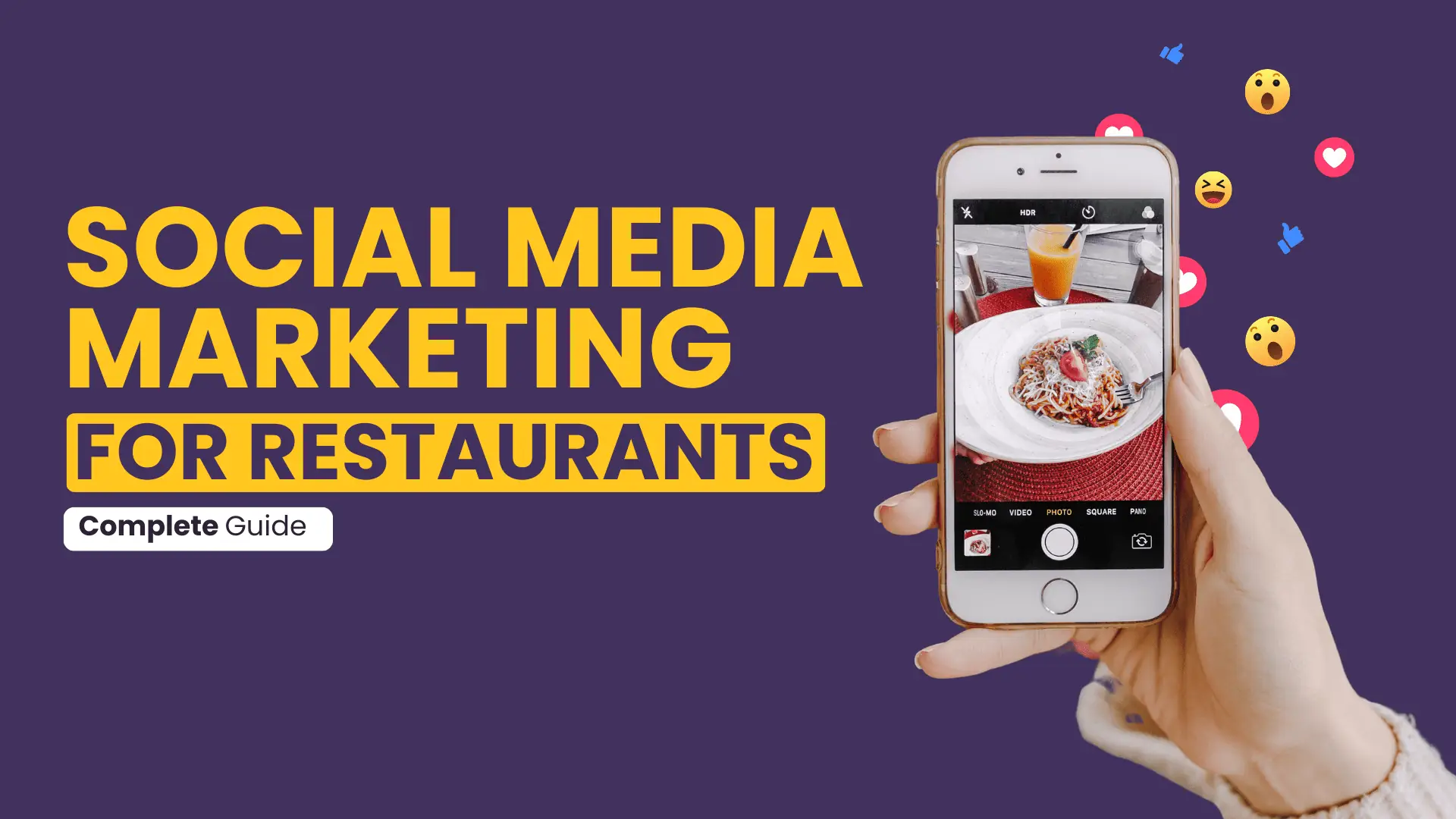


In a universe of tasty food and a never-ending array of dining options, becoming a standout restaurant isn't all about what you serve—it's about how you put it out there. Social Media Marketing (SMM) has been the restaurant game-changer. From finding hungry consumers on their phones to garnering a loyal online fan base, restaurant social media marketing is no longer nice to have, but somewhat necessary.
This end-to-end guide explores the current trends, tools, and strategies that restaurants can implement to be successful with SMM while leveraging maximum visibility with the assistance of a marketing consultant and leveraging potent social media advertising tools.
Consider this: the majority of folks look online before visiting a new restaurant. From scrolling Instagram for brunch to reading Google reviews or catching a promotion on Facebook, the choice to eat is more and more being made on social media.
That's why it's essential to establish a strong restaurants social media marketing plan. Social sites aren't just connecting you with foodies—these sites present the opportunity to highlight your ambience, cuisine, customer testimonials, and behind-the-scenes enchantment in real time.
Increases Visibility: Even if you're a local institution, regular posts ensure you reach new consumers.
Interacts with Customers: Real-time responses, feedback gathering, and tailored messages assist in building a loyal following.
Promotes Offers & Events: Seasonal menus, happy hours, or live events? Social media gets the word out instantly.
Drives Reservations: Integrated tools like "Book Now" buttons on Instagram or Facebook make it easy for people to make reservations on the spot.
Instagram Reels, TikTok, and YouTube Shorts are the new thing. For restaurants, that translates into making 15–30 second videos featuring sizzling food preparation, chef appearances, or customer reactions. These styles grab attention quickly and enjoy enormous engagement.
Users enjoy sharing photos of what they eat. Promoting and reposting UGC creates social proof and trust. Launch branded hashtags and provide incentives such as discounts or features for tagging your restaurant.
Collaborating with local micro-influencers or food bloggers can help supercharge your reach. Rather than going for the high-priced big names, go for influencers whose audience matches your target customers.
Most restaurants are using automated tools on Facebook Messenger and Instagram DMs nowadays. Chatbots can manage bookings, menu questions, or event RSVPs with little intervention from staff.
Facebook Polls and Instagram Stories are easy to make and highly engaging. Request followers to vote for the next special dish, publish countdowns to events, or conduct Q&A sessions with your chef.
Emphasise aesthetics: food photography, ambient lighting, and plating.
Utilise location tags and trending hashtags such as #InstaFood #BrunchSpots.
Reels and carousel posts are best.
Don't miss out on the opportunity to showcase user reviews in Stories.
Implement geo-targeted social media ads for promotions or new menu releases.
Utilise the Events and Offers features for local targeting.
Excellent platform for long-form storytelling and customer engagement.
Hop on trends with your twist (think viral food challenges).
Behind-the-scenes or "day in the life" material tends to go viral.
Keep it real, raw, and fun.
Share updates and photos with your Google Business Profile.
Load short video tutorials, cookery classes, or chef interviews onto YouTube.
A marketing consultant with experience will be able to assist your restaurant:
Develop a customised social media plan
Examine what type of content resonates with your audience
Maximise ad investment for social media advertising
Monitor performance metrics such as engagement rate, conversion, and ROI
Consultants provide the outside perspective and know the ever-evolving algorithms and best practices that most restaurant owners have no time to implement.
Organic reach is effective, but combining it with social media advertising can unlock your growth potential.
Instagram and Facebook ads target local users by interest and proximity.
Retargeting website visitors or past customers.
Promoting special events, grand openings, or happy hour deals.
Google Ads for “restaurants near me” searches.
Even a modest ad budget can result in a noticeable bump in reservations or walk-ins when campaigns are crafted thoughtfully.
Tracking metrics helps you understand what’s working and what’s not. Focus on:
Engagement rate (likes, comments, shares)
Follower increase over time
Website clicks & social platform online orders
ROI of ad campaigns
Feedback or DMs from customers
Utilise platforms such as Meta Insights, Google Analytics, and social schedulers to see data in one location.
Restaurant social media marketing isn’t just about pretty food pictures—it’s a powerful way to connect, communicate, and convert. Whether you’re a cosy cafe or an upscale bistro, mastering social media means keeping up with trends, being authentic, and sometimes getting help from a marketing consultant to take your strategy to the next level.
And remember, social media advertising isn’t about spending more it’s about spending smart.
1404-1405, Rupa Solitaire,
Sector-1, Millennium Business Park,
Mahape, Navi Mumbai,
Maharashtra (400 710), INDIA.
Write to us at
hr@gbim.com